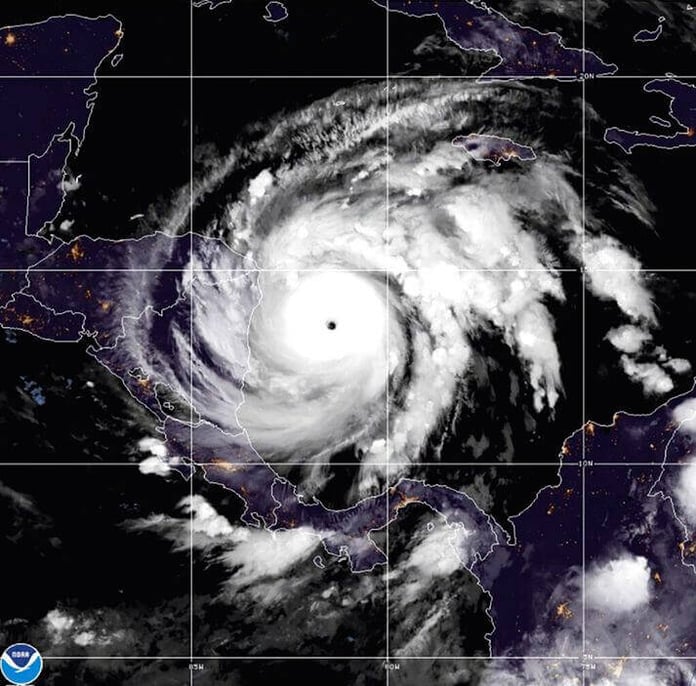
Hurricane Jota grew rapidly in the Caribbean today and has now become a fifth-degree hurricane. It now appears to be heading for a disaster area in Central America that was badly affected by Hurricane Eta earlier this month.
The wind speed in the center of the Yot was measured at more than 72 meters per second, according to the US Hurricane Agency. The storm is now sweeping across the western Caribbean off the coasts of Nicaragua and Honduras and moving west. The agency believes it will land in Central America tonight and warn of catastrophic storms, life-threatening floods, and torrential rains.
Areas in the lowlands around the borders of the two countries have already begun to be evacuated. Authorities warn that Jota will probably go ashore as landslides and floods caused human damage and property damage in Hurricane Eta within two weeks. The storm surge is expected to range from 3.6 to 5.5 meters above normal sea level, according to the AP news agency.
Precipitation is estimated at 200-400 millimeters in northern Nicaragua, Honduras, Guatemala, and southern Belize. In some places, the precipitation could reach up to 750 millimeters. In comparison, the annual precipitation was 713.6 millimeters in Stykkishólmur last year, according to information from the Icelandic Meteorological Office. There is also a risk of flooding in Costa Rica and Panama.
#Iota has become a category 5 hurricane and is forecast to bring catastrophic winds, life-threatening storm surge, and torrential rainfall to Central America. https://t.co/tW4KeFW0gB pic.twitter.com/w6oof46Ley
— National Hurricane Center (@NHC_Atlantic) November 16, 2020
Evacuate areas in the lowlands
It was already raining in Nicaragua last night. Residents of the coastal city of Bilwi are said to have flocked to markets and tool shops to stock up on plastic sheeting, nails, and other equipment to protect their homes from the storm.
About 1,500 people have left their homes in the lowlands of northeastern Nicaragua, half of them children. Authorities estimate 83,000 people in the area are at risk from the hurricane.
In Honduras, the warning is the equivalent for the whole country. Residents were evacuated from the danger zone over the weekend. Last night, 63,500 people had been accommodated in 379 shelters on the north side of the stand.
At least 120 people were killed in flash floods and landslides that followed Hurricane Etu in Nicaragua. It was then a fourth-degree hurricane. Eta also caused havoc in Cuba, Florida, and elsewhere in the Gulf of Mexico.
Rapid growth side effects of global warming
Yoga has grown rapidly in strength over the last 24 hours. It became a hurricane on Sunday morning and is now defined as a fifth-degree hurricane.
The hurricane season in the North Atlantic has been particularly eventful this year. Yoga is the thirtieth hurricane to be named and the ninth to grow rapidly. This year’s storms are so numerous that meteorologists have completed a list of predetermined names and have since had to search the Greek alphabet.
It has long been warned that man-made climate change could make hurricanes more powerful than before and that they could intensify faster due to higher sea temperatures. Scientists talk about the rapid strengthening of hurricanes, increasing its wind speed by 15.6 meters per second in one day. Jota increased his strength twice as much in twenty-four hours, according to AP.
Never before have two hurricanes in the Atlantic Ocean reached more than 30.6 meters per second in November, as Jota and Eta did. The hurricane season does not formally end until November 30.
A study reported last week found a correlation between rising sea temperatures and the fact that hurricanes are now less powerful when they land than before due to global warming.













